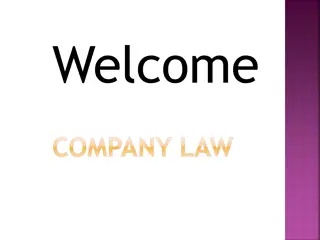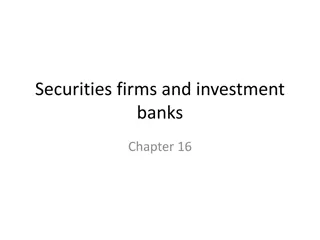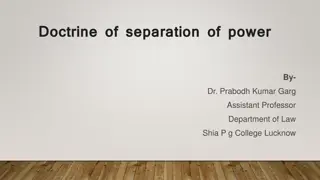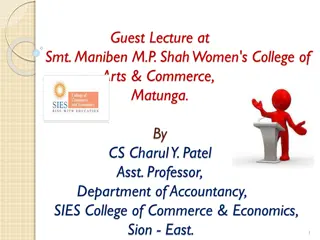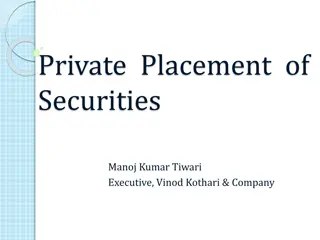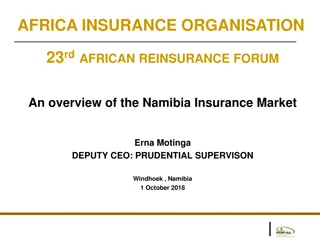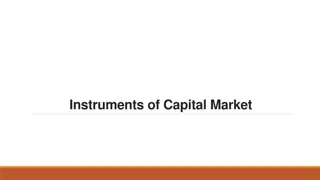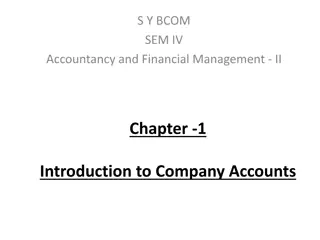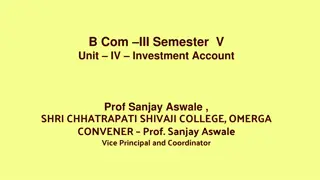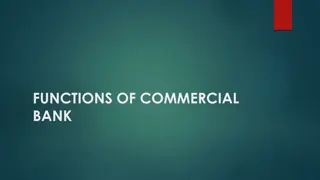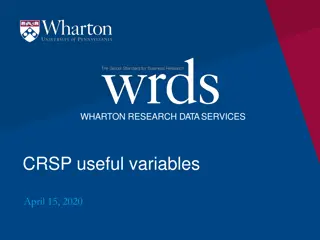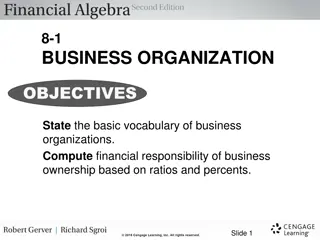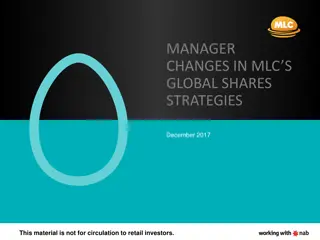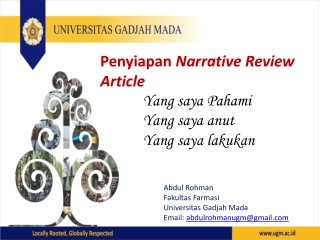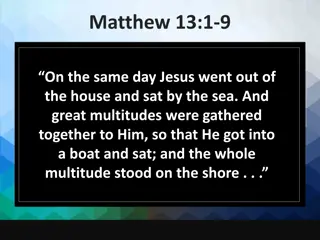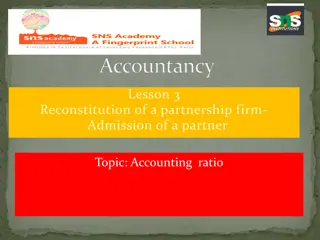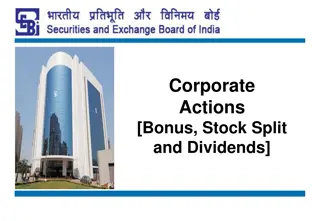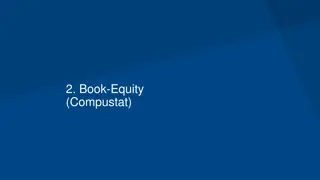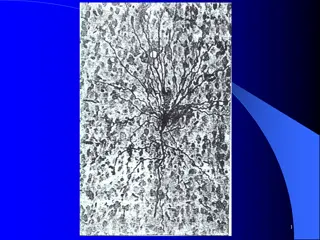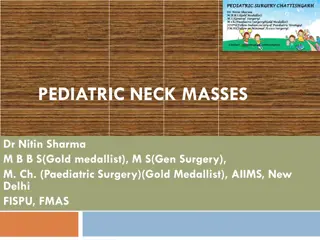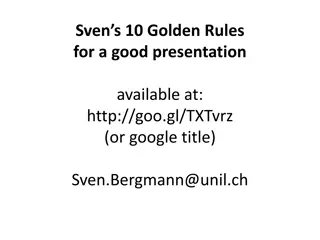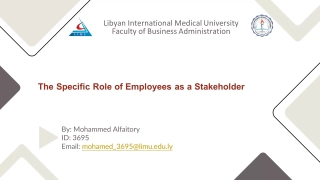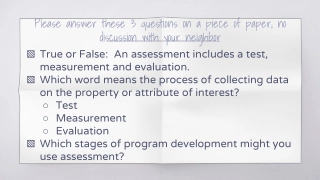Understanding Underwriting of Shares & Debentures by Bhoomika Garg
Underwriting involves a contract between a company and underwriters who commit to take up unsold shares or debentures. Types of underwriting include full, partial, and firm underwriting. Underwriters receive underwriting commissions as per the Companies Act, 2013.
Download Presentation

Please find below an Image/Link to download the presentation.
The content on the website is provided AS IS for your information and personal use only. It may not be sold, licensed, or shared on other websites without obtaining consent from the author. Download presentation by click this link. If you encounter any issues during the download, it is possible that the publisher has removed the file from their server.
E N D
Presentation Transcript
Underwriting of Shares & Debentures By : Bhoomika Garg
Introduction Underwriting may be defined as a contract entered into by the company with persons or Institutions, called Underwriters, who undertake to take up the whole or a portion of such of the offered shares or debentures as may not be subscribed for by the public. Such agreements are called Under-Writing-Agreement.
Types of Underwriting Underwriting are of three types: Full or Complete Underwriting Partial Underwriting Firm Underwriting
Full Underwriting In case, the entire issue of shares or debentures of a company is undertaken, it is said to be full or complete underwriting. Such an underwriting may be done by one underwriter or by a number of underwriters. Example: Suppose X Ltd. Issues 1,00,000 Equity shares of ` 10 each at par . The whole of the issue is underwritten by IDBI. This is the case of full underwriting.
Partial Underwriting When the underwriters do not undertake the responsibility for the whole issue but underwrite only a portion of the issue, it is called partial underwriting. In such a case while calculating the liability of underwriters, the company itself is deemed to be the underwriter for the balance not underwritten. Example: If Mr. A underwrites 75% of the 1,00,000 shares issued by a company, the company itself will be liable for the balance 255 not underwritten. This is the case of partial underwriting.
Firm Underwriting If the underwriters make a definite commitment to take up a specified number of shares or debentures irrespective of the result of the public response to the issue, it is called Firm Underwriting. Example: Suppose X Ltd. Issues 1,00,000 equity shares of ` 10 each at par. 80% of the issue is underwritten by Mr. X with the definite commitment to take up 10,000 shares. This is the case of Firm Underwriting.
Underwriting Commission The consideration payable to underwriters for underwriting the issue of shares or debentures of a company is called underwriting commission. Companies Act, 2013 lays down certain conditions regarding the underwriting commission. These are as follows: 1. The payment of commission is possible only when the same is authorized by the Article.
Contd. The rate of commission must not exceed: I. In the case of shares, 5% of the price at which the shares are issued or the rate at which the shares are issued or the rate provided in the Articles, whichever is less, and II. In the case of debentures, 2.5% of the price at which the debentures are issued or the rate provided in the Articles, whichever is less.
Contd. The commission paid or agreed to be paid is disclosed in the prospectus or statement in lieu of prospectus, as the case may be. The number of underwriting shares or debentures must also be disclosed in the prospectus or in the statement in lieu of prospectus.
Marked Vs. Unmarked Applications Underwriters while issuing application forms to the public put a seal of their name on the application form. Such a seal helps the company to find out as how many shares have been applied due to the efforts of a particular underwriter. Thus, Those applications which bears stamp of respective underwriters are called Marked Applications and Those applications which are directly received by the company and do not bear the stamp of any of the underwriters are called Unmarked Applications.
Determination of Liability of Underwriters Case I: Complete Underwriting 1. If the whole of the issue is underwritten by only one underwriter If the whole of the issue is underwritten by one underwriter, he will be liable to take up all the shares or debentures that have not been subscribed for by the public irrespective of the fact that whether applications are marked or unmarked. The liability of the underwriter is determined as follows: Shares/ Debentures issued --- Less: Total Applications Received --- _______ Liability of the Underwriter ---- _______
Example A Ltd. Issued 20,000 equity shares of ` 10 each. The whole of the issue was underwritten by Mr. X. The public applied for 19,000 shares. Calculate the liability of the underwriter. Shares Issued 20,000 Less: Total Applications received 19,000 ___________ Liability of Mr. X 1,000 shares ___________
Example Cont. 2. If the whole of the issue is underwritten by two or more underwriters If the whole of the issue is underwritten by two or more underwriters the net liability of individual underwriter is determined as follows: X Y Z Gross Liability -- -- -- Less: Marked Applications -- -- -- ______________ Balance Left -- -- -- Less: Unmarked Applications -- -- -- ( In the ratio of gross liability) _______________ Net Liability -- -- -- ________________
Example X Ltd. Incorporated on Ist April 2018 issued a prospectus inviting applications for 1,00,000 equity shares of ` 10 each. The whole issue was underwritten by Ram, Shyam and Mohan as under: No. of Shares Ram 50,000 Shyam 30,000 Mohan 20,000 Applications were received for 80,000 shares and of which marked applications were: Ram-40,000 shares, Shyam 14,250 shares and Mohan- 20,750 shares. Find out the net liabilities of each individual underwriter.
Particulars Ram Shyam Mohan Gross Liability Less: Marked Applications 50,000 (40,000) ____________ 10,000 (2,500) ____________ 7,500 (1,094) _____________ 6,406 Shares _____________ 30,000 (14,250) ___________ 15,750 (1,500) ___________ 14,250 (656) ___________ 13,594 Shares ___________ 20,000 (20,750) _____________ (750) (1,000) _____________ (1,750) 1750 _____________ NIL _____________ Less: Unmarked Applications Balance Left Surplus of Mohan in the Ratio ( 5:3) Net Liability
Case II: Partial Underwriting 1. If the partial underwriting is done by only one underwriter Where only a part of the issue is underwritten, underwriter would be liable for his own part of underwriting and for rest of the issue company itself is said to underwrite the same. Thus, the net liability is determined as follows: Gross Liability( Portion of Shortfall) --- Less: Marked Applications --- _______ Net Liability of the Underwriter ---- _______
Example A company has issued 20,000 shares, of which only 12,000 shares have been underwritten by A and marked applications exceed 12,000. In such a case, A would not be liable to subscribe any share. If marked applications are of 10,000 shares, A would have to subscribe 2,000 shares provided that by doing so the total number of shares does not exceed 20,000 (including those of A). If, it does the number of shares which A must subscribe will be reduced to that extent.
If the Partial Underwriting is done by two or more Underwriters Where only a part of issue is underwritten by a number of underwriters, the net liability of individual underwriter is determined as follows: X Y Z Gross Liability ( In Agreed Ratio) -- -- -- Less: Marked Applications -- -- -- ______________ Balance Left -- -- -- Less: Unmarked Applications -- -- -- ( In the ratio of gross liability) _______________ Net Liability -- -- -- ______________ * Note: If any resultant figure shows negative balance then add all negative figures and divide the resultant once between the underwriters having positive figures in the ratio of gross liability. Repeat this step unless all figures convert into non-negative.
Example N Ltd. Issued a prospectus inviting applications for 20,000 equity shares of ` 10 each. The issue was underwritten by A, B and C as follows: A- 8,000 shares B- 6,000 shares C- 4,000 shares Applications were received for 16,000 shares, out of which marked applications were as follows: A- 6,000 shares B-6,000 shares C- 2,000 shares Determine the net liability of underwriters.
Particulars A B C Gross Liability Less: Marked Applications 8,000 (6,000) ____________ 2,000 (800) ____________ 1,200 (400) _____________ 800 Shares _____________ 6,000 (6,000) ___________ NIL (600) ___________ (600) 600 ___________ NIL ___________ 4,000 (2,000) _____________ 2,000 (400) _____________ 1,600 (200) _____________ 1400 Shares _____________ Less: Unmarked Applications Balance Left Surplus of B in the Ratio ( 2:1) Net Liability



